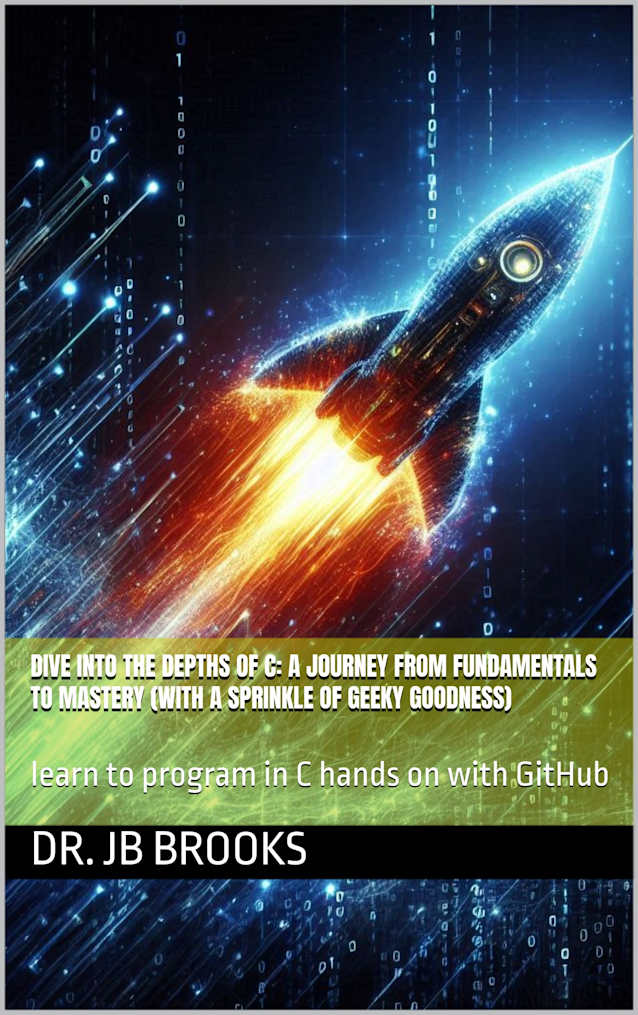Dive into the Depths of C: A Journey from Fundamentals to Mastery (with a Sprinkle of Geeky Goodness): learn to program in C hands on with GitHub
About
This book aims to be a comprehensive and engaging guide to the C programming language, taking readers from foundational concepts all the way to advanced topics. It emphasizes not just the “how” of C programming but also the “why” behind its design and its relevance in modern computing.
The book starts with the history and evolution of C, highlighting its importance and diverse applications in areas like operating systems, embedded systems, game development, high-performance computing, and networking. It guides readers through setting up their development environment and writing their first “Hello, World!” program, encouraging experimentation from the outset.
The core of the book covers basic syntax, data types, variables, constants, operators, and control flow. It then delves into functions and modular programming, including parameter passing, recursion, and the use of inline functions and macros. Significant attention is paid to arrays and strings, emphasizing the crucial role of the null terminator and the importance of using safe string manipulation techniques to avoid vulnerabilities.
ions, and enums, demonstrating their use in creating organized and memory-efficient data representations. File I/O operations, including reading and writing both text and binary files, as well as random access, are covered.
The C preprocessor is explained, focusing on conditional compilation and the importance of header files and guards. Error handling techniques using error codes and the errno variable are discussed, along with the use of assertions and static analysis tools for early error detection. A dedicated chapter on debugging with GDB and Valgrind provides practical guidance on finding and fixing bugs.
The book moves on to implementing advanced data structures like linked lists, stacks, queues, trees, and hash tables from scratch in C. It then delves into more advanced memory management concepts, including custom memory pools, memory alignment, and a brief overview of garbage collection techniques in other languages.
Function pointers and callbacks are explained, highlighting their use in creating flexible and event-driven programs. The book also covers multithreading and concurrency using POSIX threads, including synchronization mechanisms like mutexes and semaphores. Networking and socket programming are introduced, enabling readers to build basic network applications.
Interfacing C with other languages like Python and Java is discussed, providing an overview of creating C extension modules. Best practices and coding standards, including code readability, performance optimization (with caveats about premature optimization), and crucial secure coding practices to prevent common vulnerabilities, are emphasized.
Finally, the book explores real-world applications and case studies in embedded systems, the Linux kernel, and high-frequency trading systems, showcasing the practical relevance of C. The appendices provide valuable supplementary information, including detailed notes on modern C standards, guidance on creating effective glossaries and indexes, encouragement for expanding on hands-on projects, integration of the latest learning possibilities, and a focus on the “super tough” aspects of C, like memory management and concurrency.
Throughout the book, complex topics are explained clearly, and the learning process is made more engaging with “Nerd Funny” remarks. The emphasis on hands-on tutorials, exercises, and projects ensures that readers gain practical experience and develop a deep understanding of the C programming language, ultimately aiming to transform them into proficient C programmers.
Follow along with the Github repository to access the lessons.
https://github.com/grundji/C-Programming-guide.git
